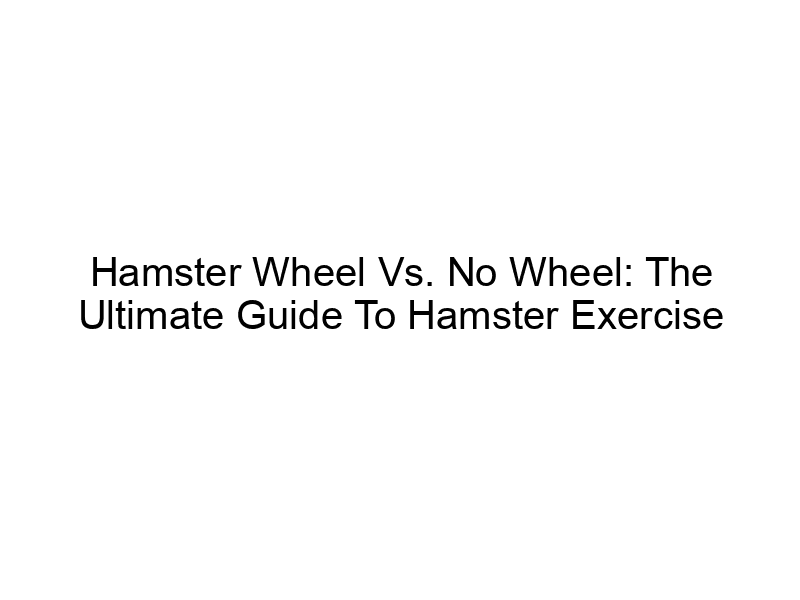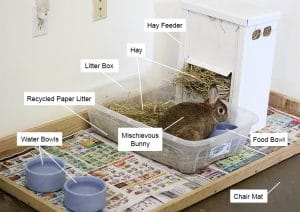Is your hamster zooming around its wheel all night, or is it suspiciously sedentary? Understanding your hamster’s exercise needs is crucial for its health and happiness. Hamster Wheel or No Wheel? The Truth About Their Exercise Needs explores everything you need to know about providing adequate exercise for your furry friend, from the benefits of wheel running to safe alternatives and potential pitfalls. We’ll cover different wheel types, exercise space requirements, and signs that your hamster needs more activity. Get ready to become a hamster exercise expert!
Hamsters are naturally active creatures. In the wild, they spend a significant portion of their day foraging, exploring, and escaping predators. This innate activity level translates to a need for regular exercise in captivity to maintain their physical and mental well-being.
Lack of exercise can lead to obesity, lethargy, muscle atrophy, and even behavioral problems.
How Much Exercise Does a Hamster Need?
The exact amount of exercise varies depending on the hamster’s breed, age, and overall health. However, a good rule of thumb is to ensure they have several hours of active movement each day. This can be achieved through wheel running, playtime in a large enclosure, or a combination of both.
The Case for the Hamster Wheel
Types of Hamster Wheels: Solid vs. Wire
There are two main types of hamster wheels: solid and wire. Solid wheels are generally safer, reducing the risk of foot injuries, while wire wheels can cause injuries if the hamster’s feet get caught in the gaps. Choose solid wheels made of wood, plastic, or metal. Ensure that the wheel’s diameter is sufficiently large to prevent the hamster from arching its back while running. A wheel diameter of 8-12 inches (20-30cm) is ideal for most hamsters.
Benefits of Wheel Running
Wheel running provides hamsters with vital cardiovascular exercise, helping them maintain a healthy weight and strong muscles. It also provides a natural outlet for their energy, promoting mental stimulation and reducing boredom. A running wheel can also become a focal point for your hamster’s activity, a comforting routine in a familiar environment.
Selecting the Right Hamster Wheel
When choosing a wheel, consider your hamster’s size and breed. Syrian hamsters (the largest type) need larger wheels than dwarf hamsters. Look for a wheel with a quiet running mechanism, solid running surface, and a sturdy construction. Check reviews and compare prices before purchasing to find the best value.
The Case Against the Hamster Wheels
Potential Dangers of Hamster Wheels: Injuries and Stress
While wheels offer exercise, poorly designed or used wheels can lead to injuries. Wire wheels, for instance, can result in broken toes, bumblefoot (sore feet), and other foot problems. Poor quality wheels may be uneven, causing stress on the hamster’s joints. The noise from some wheels can also be disruptive to your sleep.
Alternative Forms of Exercise for Hamsters
Providing alternatives is always advisable. A large enclosure filled with tubes, tunnels, climbing structures, and hiding places encourages natural exploratory behavior. Regular supervised playtime outside their enclosure in a safe area will provide valuable stimulation.
Signs Your Hamster Needs More Exercise
Watch for signs of inactivity, lethargy, weight gain, or excessive sleeping. If your hamster doesn’t utilize its wheel frequently and displays these symptoms, it might be an indication they need more exercise or their enclosure requires enrichment.
Hamster Enclosures and Exercise Space
The Minimum Space Requirements for Hamsters
Hamsters need significantly more space than many people realize. A cramped cage restricts their natural movement and exploration. Aim for an enclosure as large as you can practically manage, with multiple levels, tunnels, and hiding places.
Enrichment Ideas for Your Hamster’s Habitat
Enrichment doesn’t only relate to wheels. It’s the addition of objects and activities that encourage natural behaviors in your hamster. Hide treats, provide different textures to explore, and add climbing toys or nesting materials. Think carefully about creating a space that promotes activity, not just passive lounging.
Creating a Safe and Stimulating Hamster Environment
Ensure your hamster’s enclosure is secure, free from hazards, and made of escape-proof materials. Provide a variety of bedding materials and chew toys. Rotating toys and rearranging the enclosure regularly also helps maintain interest.
Wheel vs. No Wheel: Weighing the Pros and Cons
Comparison of Wheel Running vs. Alternative Exercise Methods
Both wheel running and alternative exercises are crucial for overall fitness. A wheel provides consistent cardiovascular exercise, while alternative methods promote exploration and mental stimulation. Ideal scenarios combine both.
Making the Right Choice for Your Hamster
The best approach depends on your hamster’s personality and preferences. Some hamsters love wheels, others are less interested. Observe your hamster to determine what it enjoys most and adapt accordingly. A good rule of thumb is to always offer a variety of enrichment options.
Choosing a Suitable Wheel or Alternative Exercise Method
If you choose a wheel, ensure it’s of high quality, safe, and the appropriate size. If opting for alternatives, dedicate significant time to supervised playtime and carefully enrich the enclosure.
Setting Up the Perfect Hamster Habitat
The Best Type of Cage or Enclosure for a Hamster
Consider enclosures made from solid materials such as glass, wood, or solid plastic. Avoid wire cages, as these offer insufficient protection and don’t allow for creative enrichment. The size of the cage should be determined by the size of your hamster.
Essential Items to Include in Your Hamster’s Habitat
In addition to a wheel (optional) or a replacement, make sure your hamster has a comfortable bedding substrate, food and water dishes, hideaways for rest and safety, and plenty of chew toys.
Maintaining a Clean and Hygienic Environment
Spot-clean your hamster’s cage daily and perform a complete cleaning (substrate replacement) weekly. Regular cleaning prevents disease, unpleasant smells, and provides a cleaner environment for your hamster to enjoy.
Frequently Asked Questions
What is the ideal size for a hamster wheel?
The ideal size depends on the hamster species. For Syrian hamsters, a wheel with a diameter of at least 12 inches is recommended to avoid back arching. Dwarf hamsters can often use smaller wheels, but aim for at least 8 inches.
My hamster doesn’t use its wheel, is it okay?
If your hamster isn’t using its wheel, it doesn’t necessarily mean it’s unhealthy, but it’s important to provide alternative forms of exercise. Enrich its habitat, supervise playtime outside the cage, and ensure it’s getting enough space to roam. However, if you observe inactivity, lethargy, or weight gain, consult a vet.
Are solid-surface wheels better than wire wheels?
Absolutely! Solid-surface wheels minimize the risk of foot injuries and are much safer. Wire wheels can cause painful injuries to a hamster’s feet.
How often should I clean my hamster’s cage?
Spot clean your hamster’s enclosure daily, removing any soiled bedding, food scraps, and droppings. A complete cleaning (with substrate replacement) should be done at least once a week.
What are some signs that my hamster isn’t getting enough exercise?
Signs include lethargy, weight gain, loss of fur, excessive sleeping, and a lack of interest in exploring their environment. A lack of activity combined with a small enclosure is often a sign that you need to improve your hamster’s living conditions.
Can I let my hamster run free in my house?
Letting your hamster run free is extremely risky. There are many potential hazards in your home, such as electrical cords, toxic substances, and open spaces where your hamster can get lost or injured. Supervised playtime in a designated area is much safer.
My hamster is overweight, what should I do?
Consult your vet to rule out any underlying medical conditions. Then, focus on increasing exercise through a larger enclosure, enrichment activities, and supervised playtime. Adjust the diet to reduce high-calorie foods.
What type of bedding is best for a hamster?
Soft and absorbent bedding is crucial for your hamster’s comfort and cleanliness. Avoid cedar or pine shavings as these can be toxic. Paper-based bedding is a popular and safe option.
Final Thoughts
Providing your hamster with adequate exercise is essential for its overall health and well-being. While a hamster wheel can be a valuable tool for cardiovascular exercise, it’s not a replacement for a spacious, stimulating enclosure and regular supervised playtime. The key is to create a balanced environment that caters to your hamster’s natural instincts and promotes both physical and mental well-being. Remember, a happy hamster is an active hamster! By understanding their exercise needs and providing a suitable environment, you can ensure your furry friend enjoys a long, healthy, and fulfilling life. Make sure to consider all the factors discussed in this article and make the best choice for your little companion. Choose the best options for your hamster, providing a happy and healthy environment.




